Sweating the Details: 9 easy steps to streak-free windows
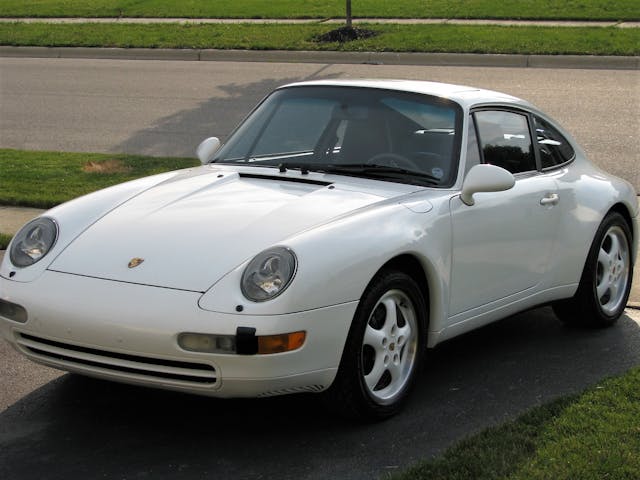
Welcome to Sweating the Details, a new, limited series in which Hagerty educates you on how to clean and maintain the visual appeal and condition of your ride. Matt Fink is a part-time auto-detailer in Columbus, Ohio, as well as Hagerty Media’s branded content writer.
In life, I am better than the average person in precious few areas: For starters, I have an immaculate red beard that even the finest beauty product fail to replicate. I am a Mario Kart 64 ace, lethal with shell and banana peel alike. And I’m an expert at cleaning car windows without leaving streaks.
Fact is, everyone loves to have clean windows, despite the reality that few understand how to get them. Despite their best efforts, most people leave streaks when they attempt to clean automotive glass. In this article, I’ll teach you how to leave no trace and become window-cleaning royalty in 9 easy steps.
Though the exterior gets the most attention, the inside of a windshield or windows is just as worthy of a good wash. Clean inside glass is safer for you as a driver, too; haze makes it harder to see, especially at night and in the rain. Did you ever notice that dirty glass is more susceptible to condensation (fogging) during temperature changes than clean glass?

What to have on hand

Streaking is the enemy, and not Will Ferrell-naked-in-Old-School kind. To avoid streaks, you’ll need proper towels, cleaners, and technique.
Towels
What you use to wipe windows is way more important than what you spray on them. A towel that is free of contamination is essential. My recommendation is that you have specific towels you use exclusively for window cleaning. Do not expect success if you simply spray Armor All on a bath towel, wipe your dash, wash it, and then expect to use it to clean your windows next time. Purchase some nice microfiber towels, selecting a type that is absorbent and lint-free. Waffle weave works best. (Another good option is a 100-percent-cotton surgical towel or diaper.) Keep them in a container labeled “For Windows.”
Cleaner
There are many great options as far as cleaning solutions, including Griot’s Window Cleaner. I use Meguiar’s Window Cleaner Concentrate, or the brand’s Perfect Clarity Glass Cleaner. Both work well on exterior and interior glass, but the concentrate is way more cost-effective and may literally last you a lifetime. The most important benefit of these products is some lasting rain/snow protection on the outside. They are also ammonia-free and safe on window tint. Stoner Invisible Glass is also a nice product, especially the aerosol spray (typically $4 at Walmart). The benefit of using an aerosol or foaming cleaner is that it doesn’t run on vertical surfaces and start to drip before you wipe it. Be sure to read labels! Some glass cleaner is only meant for exterior use.
Bonus tool
As with any job, the right tools can make it a lot easier. If you have short arms or the dashboard layout is particularly deep, a reach tool for cleaning the interior glass can be helpful, and there are a few versions on store shelves. The wand makes reaching across the front windshield and rear window a breeze. It gets into interior glass corners, as well, and the removable bonnet can be washed.
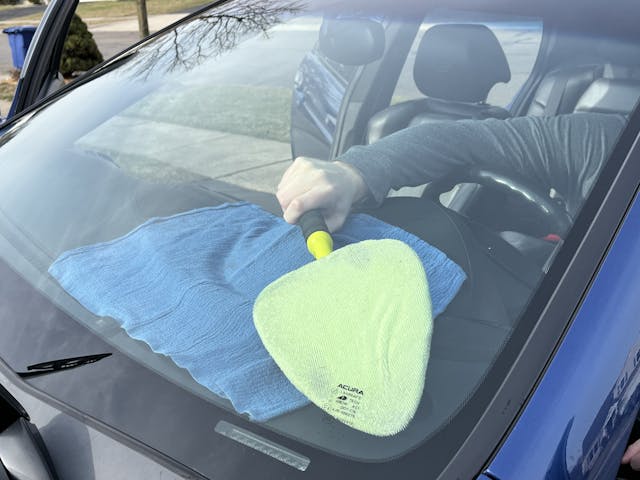
What NOT to use
❌ Paper towels
Put down the Bounty and step away from the cardboard tube! That is, unless you wan to leave tiny little paper fibers all over the glass. Secondly, many paper towels have lotions and moisturizers added to them, which will cause streaks. Don’t cheap out on towels. You’re always better off buying nicer ones and cheaper window cleaner, rather than the other way around. If you are desperate and can only use what’s on hand, a newspaper will work in a pinch. It’s both absorbent and lint-free, not to mention cheap.
❌ Household glass cleaner
Many household glass cleaners contain ammonia (e.g. Windex.), which can harm plastics, damage infotainment screens, or remove the glossy texture on wood. It can even stain leather and degrade window tint.
❌ Extra concentration
A little goes a long way, so if you are diluting a concentrated product, be sure to dilute it all the way. A stronger concentration seems like it would work harder for you, but in reality i just leads to more streaks.
Technique
OK, now that we’ve put away the issue of supplies, let’s talk methodology. You absolutely must have two towels on hand: A “wet” towel and a “dry” towel. You will never get the results you want using a single towel.
Step 1: Inspect outside windows
If there is tar or sticker residue, attack that first. Soak that area with your automotive specific window cleaner and use a razor blade to remove it. As long as you keep the blade flat to the surface, there is no way to damage your glass. Be sure to keep the area very wet while you are using a razor blade. Keep the blade away from running over defroster strips and rubber seals.
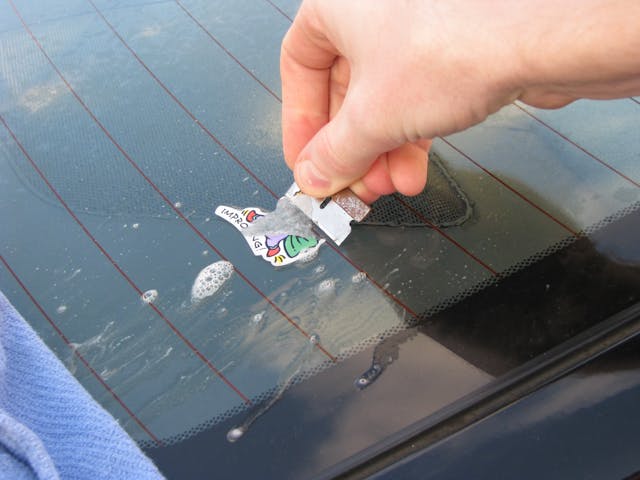
Step 2: Open all doors
Generous airflow helps dry the windows. And if it’s summer, by the time you get to the back window, it can be an oven in there. Plus, some cleaners have a strong smell and fresh air never hurt anybody.
Step 3: Windshield first
I always start on the front windshield, for no other reason than that it’s the most important area to get clean so you may as well attack it when your towels are the cleanest. I spray plenty of glass cleaner on the glass itself, but it is a matter of personal preference if you prefer spraying onto the towel. Both methods work.
Don’t be afraid to give the glass a good soaking: a common mistake is using too little cleaner which can —you guessed it—lead to streaks. Applying solution, whether directly or by towel, gets tricky on the inside of the front windshield. I lay an extra towel on the dash to catch any drips. There are a few glass cleaners (like this one from 3M) that claim to be safe for use on interior plastics, but in general it is not a good idea to leave cleaner drips on the dash. They won’t hurt if quickly wiped away.

Step 4: “Wet” towel first
After covering the glass with cleaner, use your wet towel to wipe the product all over the window. (Or simply apply with a wet towel soaked with cleaner.)
The method here is not like applying wax. No circles! On the front and back glass I like to do just half of the surface (left or right) at a time. Start with a “box” wipe: go along the four sides of the window. Make sure to get into the edges and corners. Then wipe up to down from one end to the other, and finally, side to side from top to bottom. Be sure to wipe all the cleaner rather quickly, because when the product begins to dry on glass it leads to streaking—another reason to use plenty of cleaner. Outside, in the summer, drying will happen faster than you think.
If your wet towel starts to get too dirty or too wet, open up the folded towel and use a fresher side. There is no need to wipe the window totally dry with this towel.
Step 5: Absorb and buff
With a little moisture still left on the glass, quickly switch to your dry towel to absorb and buff the remaining moisture. This process may seem like extra work, but the dry towel is what will remove all the streaks. So really take your time on this part and make sure to go over all the glass. For my dry towel I do the same box wipe, then go in reverse order side-to-side and finish with an up-and-down wipe. This is by far the most important step to do with care.
Step 6: Double checks
Did you miss the corners? Try using your reach-y tool thingy.
And while sitting in the driver’s seat, don’t forget to clean the rear-view mirror, sunroof, gauges, infotainment screens, and vanity mirrors.

Step 7: Side windows
Use the same cleaning steps with each window. For the side windows, put them down a couple inches BEFORE you clean them to wipe the edges, then put them up all the way. If you try to put a window down after cleaning it, it can be very frustrating to see water spots come up with it.
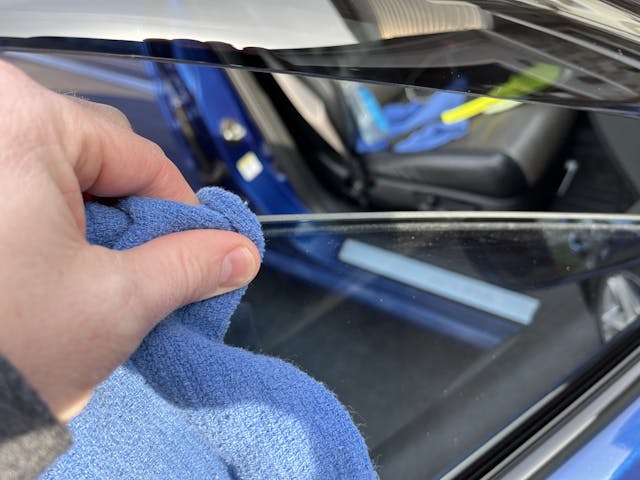
Step 8: Rear window
OK Hitchcock fans, watch that arm when attending to the back glass. Especially if you’re crammed in the back of a two-door, you probably feel like a hot mess in the back seat, so don’t let that sweaty arm touch the window surface.
Step 9: Don’t forget the wiper blades
When you are finished with the windows, the last step is to use your wet towel to clean off the wiper blades. Remember: this surface rubs across your windshield exterior over and over. You’ll be surprised how much grime comes off.

Other hot tips
- When washing your window towels, never put a fabric softener sheet in the dryer. This will cause the towel to … all say it together, “leave streaks!”
- To keep my towels organized, for my sanity, I have a different color towel that I only use on windows.
- Do not use your wet towel on more than one vehicle before washing. It will be full of dirt.
- If the car has been smoked in, expect the inside windows to need a double cleaning treatment.
- Even if you get the inside windows perfectly clean, they will still need to be cleaned again after a few months. The plastics on cars release chemicals into the air that can cause the hazy look on the inside of your windows. Ever wonder where that “new car smell” went? Your glass.
- If your local dealership offers to clean your car as part of the service, ask them to never touch your interior windows. Some of the worst windows I have ever seen are on high-end cars taken in for dealer service. I’m guessing these places use the same nasty wet towel to dry the outside body as they use to “clean” the inside windows.
- If your windows have heavy water spots, you may need to take additional action. The easiest way to remove them is to use a clay bar on the glass.
- Whenever possible, clean your car windows in a shady area to help to reduce the evaporation rate of your cleaning product.
- Be careful who you tell. All of this information is applicable to cleaning the windows of a house, so it may be best to keep roommates/partners/spouses in the dark. (Unless you REALLY love clean windows.)
As with most car care practices, cleaning your glass properly is one third using the right tools, one third knowing how to use them, and one third taking the time to do the job right. Do you have any other tips for getting and keeping your car windows clean? Let us know in the comments.
***
Check out the Hagerty Media homepage so you don’t miss a single story, or better yet, bookmark it. To get our best stories delivered right to your inbox, subscribe to our newsletters.
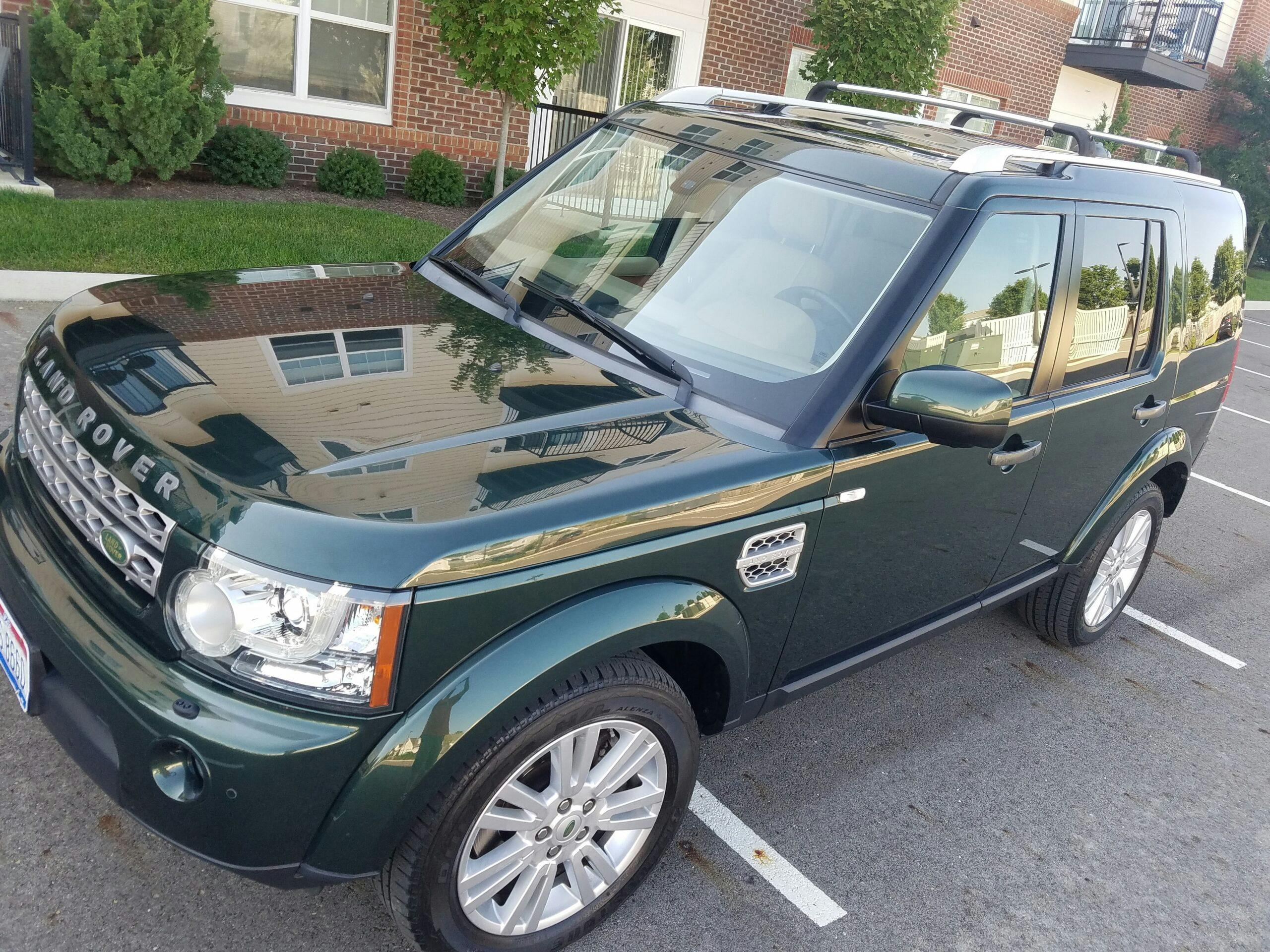
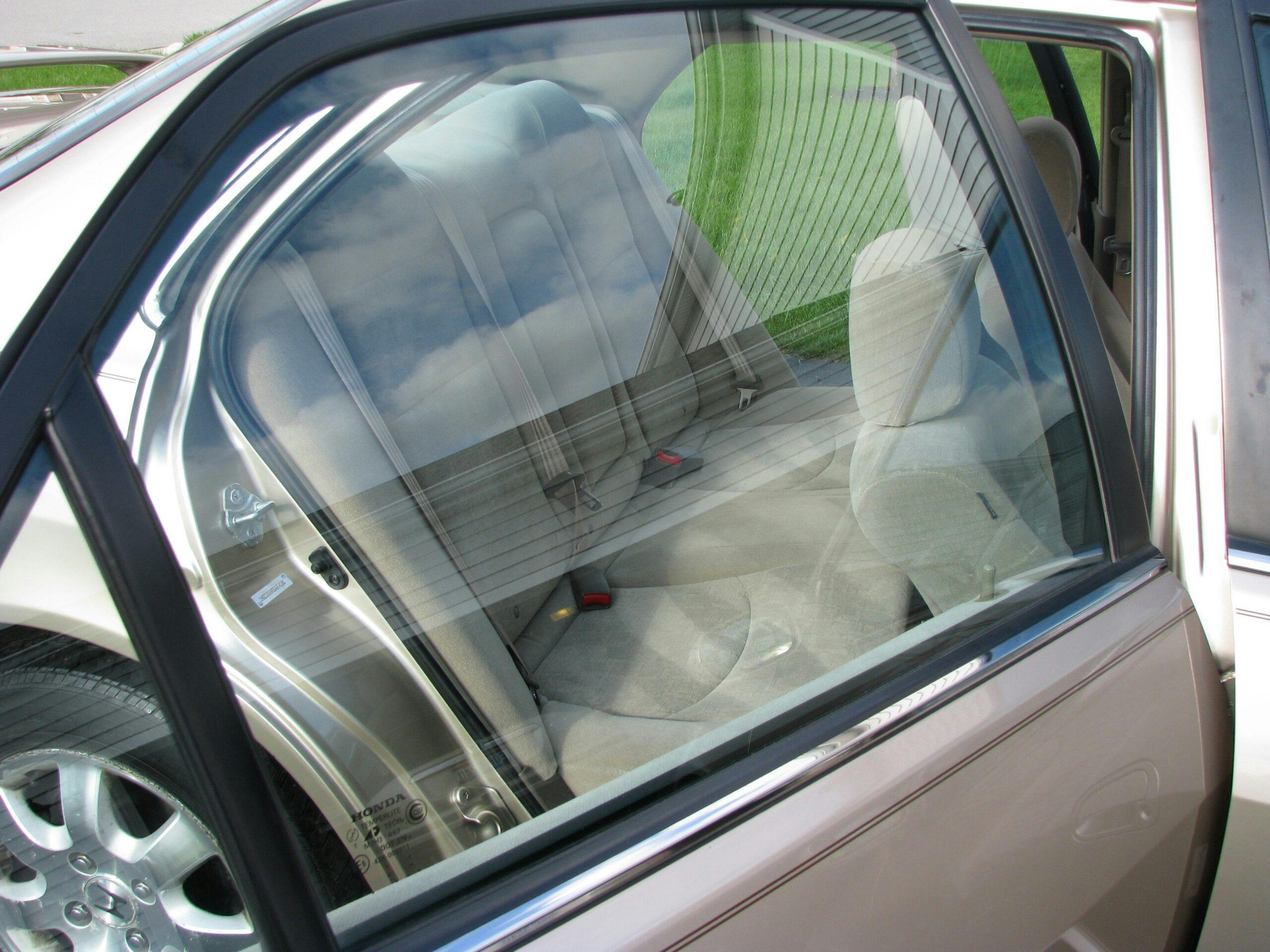


I second the mention of Stoner Invisible Glass. It’s the best product I have found, and safe on tint film as well.
Thanks for the feedback Johnathan.
The first photo in the article shows a container of Rain X but the article did Not mention it be applied? Did I miss something?
It appears that is Rain X brand glass cleaner…
You are correct David. Just didn’t get into the specific differences between products and rather focused on the techniques needed for success. I do often use Rain X on exterior glass. Since it is more expensive, I do not use it on interior glass since its water beading technology wouldn’t help any.
I have used filters from a coffee maker on the inside of windshield. Just crumple them up and they do a very good job of getting rid of the film with no mess. Have done this for years. Newspapers are best on outside of windows,
I have never tried coffee filters but it makes sense why they work. They are designed to not break apart even when drenched with water so I’m sure they hold up well and don’t leave lint behind.
It totally blows my mind how many different ways and products there are for cleaning windows. And believe me I’m no expert. I’ve tried many glass cleaners. The one that impressed me was when I needed the windshield replaced and the guy from Safelite cleaned the windshield in the bright sun. Using their own brand of cleaner. And I’ve had professional house window cleaners tell me the secret is always clean in circles not in straight lines. Bit then I know on car surfaces to always go in straight lines so you don’t get swirling. Go figure?
Mick
Great article!
I have tried every combination of cleaner and wipe / wipe technique. Nothing including all these suggestions will beat the crystal clear streak and dust free clean from Windex and newspaper, period.
Sorry to disappoint you, but I have been using GM Glass Cleaner and paper towels for 30 years now and i don’t get any streaks or pieces of paper towel left on the glass. The windows always come out crystal clear. I have no trouble with any of the rubber or plastic areas as they get a treatment each time I wash the car. The wood on the door panels are fake wood, so it won’t damage that. The seats are a cross between pure vinyl and imitation plastic, so nothing short of an A bomb will damage them. Go easy on me guys. 🙂
Hey, if it works for you go for it! I promise you didn’t disappoint me haha. I definitely see a huge different using the right towels though. It’s not the “wood” that Windex can damage, it’s the clear coating on it. And I still encourage you to be careful around plastics as Windex can definitely warp and stain them if it is left to sit on them. Appreciate the feedback.
Appreciate the tips. For a few years I was a tanker driver for Gulf Oil. We didnt do nearly as good a job but then again our toolbox consisted of ammonia and newspapers. Fast and not too shabby.
Lots of great tips here. I can’t stand dirty windows. Once a year I clean outside windows with car wash, followed by extremely fine steel wool with Bon Ami, followed by claying. with a full rinse with clear water.
Inside I use 1/3 vinegar 2/3 water, twice followed in between with a plain water cleaning.
The final secret is a very fine mist spray of 50% ammonia, 50% Isopropyl alcohol (70% or above) (NO water), Buff clean with a spotlessly clean microfiber dry.
As a car detailer for 60 years, This final step is a miracle. Will not harm factory tints. Aftermarket tints should be tested in a tiny place before using.
This 50/50 solution works on outside windows as well and will not remove RainX protection
Wow, that’s an amazing process. Maybe you should write the next article, haha. I’m super impressed.
All very great tips. What about ceramic coating for windshields?
Good question. I am NOT an expert on ceramic coating on windshields. I personally don’t do it because of the increased cost and complex application process. That doesn’t mean it’s not worth it though. I have found that the times I have done it, it seems like the combination of windshield washer fluid and wiper blades cut the lifespan down to less than advertised. But other people swear by it. There is definitely a difference between professional grade and consumer grade ceramics.
Just wondered about the tip suggesting to clean wipers with a towel. Won’t the carbon black in the rubber leave a mess on the towel?
Oh it definitely does! That’s why I do it as the very last step. I have never had a problem with it all not washing out though.
Great commentary. I’ll try the the two direction wiping the next time. ………..Jim.
What the article didn’t mention is how to clean the glass-cleaning cloths. It did mention not to use softener, but not what kind of soap or detergent and how much. You can clean windows and not leave streaks but still leave a film.
Good tips . In cold or moist areas that fog windows on inside use a clean cloth to wipe the dew off the inside. I found that if you let it dry it will leave grime or haze.
Try coffee filters if you cannt find newspapers.